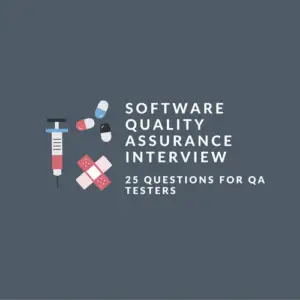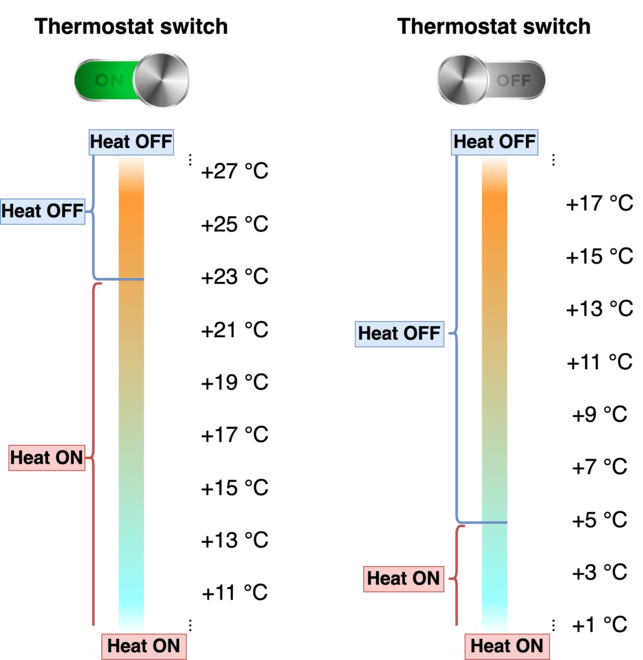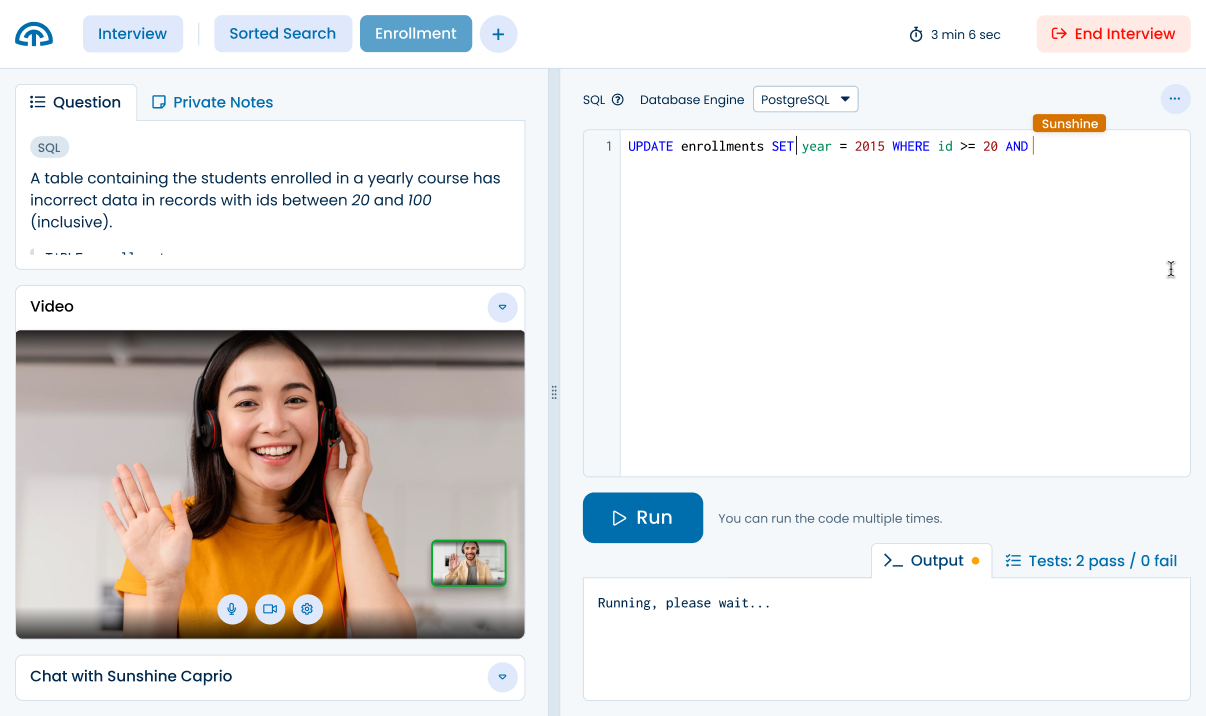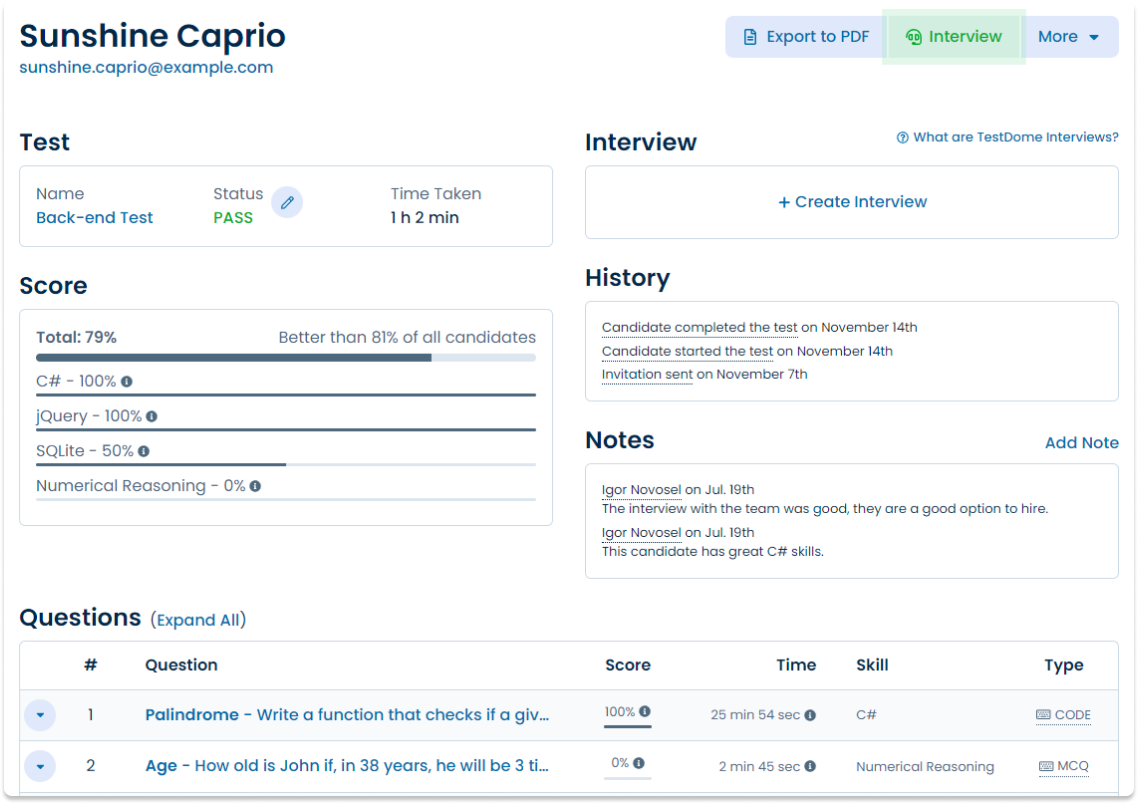

Software Quality Assurance Interview Questions for QA Engineers
Presenting today is the post outlining the 25 most frequently asked Software Quality Assurance Interview Questions for QA Testers.
Software Quality Assurance which we famously know as QA is a standard process for an organization to make sure the quality of its products and services. QA ensures continuous improvement in existing processes and keeps evolving to meet future demands. In today’s post, we tried to highlight some of the basic QA interview questions that are relevant to QA professionals.
Not only the quality assurance testers but software quality assurance managers can also refer to this post to brush up on their fundamental QA testing skills. We’ve emphasized the quality processes and the testing strategy. So most questions would spin around these two areas.
The objective of this article is to acquaint you with handling the challenges at the project level. The most common tasks of an experienced QA are to devise the strategy and set up the testing process.
Also, a software quality engineer is a person whose primary function is to certify the quality of a product. Hence, he plays a vital role in creating roadmaps and defining strategies.
To make you a successful QA, we’ve filtered the 25 QA interview questions and answers. Since it’s not easy to read the entire post in one go, so don’t forget to bookmark it for future reference. Also, we’ve created 25 navigation points for quick access to the questions.
Check out the Software Quality Assurance Interview Questions.

1. What are the main differences between Quality Assurance, Quality Control, and Software Testing?
2. What is the right time to commence the QA activities?
3. What are the differences between a Test Plan and a Use Case?
4. What are the differences between a Test Plan and a Test Strategy?
5. How does the severity of a bug differ from its priority?
6. What is a good test case?
7. What are the data points you should add while writing a good test case?
8. When do you decide to stop testing?
9. Why is it not easy to convince the top stakeholders to invest?
10. What if QA starts getting involved in digging out production issues?
11. What are the first few things a QA manager should do after joining a startup?
12. How would you decide what tests to automate and what to cover in manual testing?
13. As a QA tester, who will you report or submit your test cases?
14. What if you have to improve the QA process, how will you do it?
15. What are the documents you may refer to while writing the test cases?
16. What is the difference between functional and nonfunctional testing?
17. What is Negative Testing and how is it different from Positive Testing?
18. What are the leading testing techniques for QA? And what is their purpose?
19. What are the leading Testing Approaches for QA?
20. What are the different verification techniques available for QA?
21. How do you manage if you face doubts during a project?
22. What approach do you follow to measure the testing efforts in a project?
23. What causes a Software to have bugs?
24. What is the main difference between Verification and Validation?
25. What is Agile Testing?
Let’s Prepare for a Software Quality Assurance Interview.
Question-1. what are the main differences between quality assurance, quality control, and software testing.
Software Quality Assurance encompasses the whole development process, monitoring/improving the process, and ensuring adherence to the agreed-upon standards and procedures. And it guarantees the discovery of bugs and the validation of their fixes.
Quality Control sets up the process to determine bugs and share feedback to raise the quality of the application under test. It’s probably the testing team that carries out the quality control process.
Software Testing is again a process that begins with discovering bugs and ends with the final validation of the bug fix. It also confirms the product meets the customer criteria and the procedures set by the organization.
Question-2. What is the right time to commence the QA activities?
Ans. Ideally, we should begin QA activities as early as the project kicks off. There are many advantages of a timely start like we get more time to set standards for achieving the quality.
Any delay in the QA roadmap directly impacts the cost, time, and efforts for a project.
Question-3. What are the differences between a Test Plan and a Use Case?
Ans. A Test Plan comprises all the elements that form the test strategy. It includes the application getting tested, the scope of testing, the QA activities, roles/responsibilities, and deliverables.
Whereas a Use Case standardizes the way the user reacts in a situation and how the system responds. It results in the creation of diagrams, flowcharts, and the pre/post conditions.
Question-4. What are the differences between a Test Plan and a Test Strategy?
Ans. Test Strategy is a high-level plan usually initiated by a software quality assurance manager. It captures all the primary testing activities. It is basically for the stakeholders who have high influence but low interest in the project.
Whereas a Test Plan provides more details on how the testing should take place in the entire project lifecycle.
Question-5. How does the severity of a bug differ from its priority?
Ans. The priority defines the urgency of a bug to get fixed. There are factors to consider e.g. Fix is affecting some other functionality or the bug is blocking a certain feature.
The severity depicts the impact of a defect on the application. It determines the level of damage that could affect the integrity of the data in the system.
Back to top
Question-6. What is a good test case?
Ans. A test case is a sequence of operations controlled by constraints to determine whether an application, product, or service is working correctly to the expectations.
Make sure it covers all the test conditions and provides a proper definition.
Next, read the below examples and see the difference between a bad and good test case.
- Verify if the login works.
- Open the login screen, enter the username – [email protected] and password as “12345678”.
- Press the login button.
- Verify if the user dashboard is visible in not more than 2 seconds.
Question-7. What are the data points you should add while writing a good test case?
Ans. The following are the qualities that constitute a good test case .
1. Test case ID 2. Test description 3. Priority 4. Severity 5. Environment 6. Product version 7. Steps required 8. Expected output 9. Actual output
Question-8. When do you decide to stop testing?
Ans. Usually, it’s the test plan that covers the ballpark estimates of the testing cycles. However, applications are complex in nature. And it’s not easy to predict the exact time to complete the testing.
However, below are the indicators that signal to stop or halt testing.
1. Deadlines (Release or Testing timelines) 2. Test case completion with expected pass percentage. 3. Testing cost overruns. 4. Attained the desired coverage of code/functionality/requirements. 5. The defect discovery rate falls below the threshold.
Question-9. Why is it not easy to convince the top stakeholders to invest in extending or advancing the Software quality assurance process?
Ans. It’s not easy for the software quality assurance manager to attract more investment for the advancement of the process. The reason is evident, read the below famous one-liner.
Solving Problem is a high-visibility process; Preventing them is low-visibility.
There are also other financial constraints that don’t allow spending more funds on the testing front. However, if you can demonstrate the benefits with some real-time data, then it’s possible to make ways.
Question-10. What if QA starts getting involved in digging out production issues?
Ans. It’s a good practice for QA to check on production issues. They will get to learn the gaps that could have possibly led the bug to leak through the QA gates.
However, such issues occur mostly due to environmental mismatch. A small tweak in the registry setting, resetting the browser cache, or restarting the backend service fixes the problem.
By lending support to production, QA can expect to find out untested areas and add them to their test plan. So it’s worth the exercise which will ensure quality in the long term.
Read some experience-based software quality assurance questions!
Question-11. what are the first few things a qa manager should do after joining a startup.
Ans. A successful QA needs resources be it human resources hardware or the funds to acquire them. All of it comes with proper planning and timely execution.
However, things are a bit unorganized, especially in a small-scale startup. And that’s where the real test of a QA manager begins. He has to perform in a short time and with limited resources.
Here are a few action items for the QA manager to start.
- Start work on preparing a solid test plan.
- Outline the test areas, and write down high-level use cases.
- Split use cases into test cases, add pass/fail criteria, and set priority.
- Use a spreadsheet or any open-source tool like TestLink to manage test cases.
- Set up a tool like Bugzilla or JIRA for defect management.
- Functional testing
- Acceptance testing
- Integration testing
- System testing
- Consider testing on multiple platforms, browsers, and devices.
Question-12. How would you decide what tests to automate and what to cover in manual testing?
Ans. This type of question tests a candidate’s decision-making skills. It’s a test of whether you can prioritize a test case or assess if it is feasible to automate the test case.
However, answering the following questions could help you make the decision. You’ll probably automate in the below situations.
- Identify cases that are tedious and require a lot of manual effort.
- Scenarios that you’ve not covered in the past.
- Select cases which need to run on different browsers/devices or platforms.
- Pick those features that don’t change so frequently else you won’t automate.
- Exclude test cases that require explorative testing or verify the user experience.
Question-13. As a QA tester, who will you report to or submit your test cases?
Ans. There are a number of people involved in the QA process. Also, it’s better for your test cases to cross through many eyes.
Hence, you can refer them to the following.
1. To Test Leads for getting them reviewed. 2. To BA for making sure the test coverage. 3. To the DEV team for ensuring the functionality coverage.
Question-14. What if you have to improve the QA process, how will you do it?
Ans. A software quality engineer can take a number of steps to improve the QA process.
1. Introduce a web-based test management tool like JIRA. 2. Create an automated process for reviewing the test cases. 3. Assess test coverage and share with people concerned. 4. Use statistical formulas to provide bug discovery rate/testing efforts.
Question-15. What are the documents you may refer to while writing the test cases?
Ans. Following is the list of documents that help in writing test cases.
1. Requirement specs doc 2. Feature description doc 3. User stories description 4. Use case description 5. Acceptance criteria
Question-16. What is the difference between functional and nonfunctional testing?
1. Functional testing takes care of the validation of features in an application. It ensures that the application is behaving in the expected manner.
It also confirms the application meets the customer’s requirements. Every such requirement has related test cases and each test case should pass before exiting the functional testing
Regression, Smoke, Integration, and System testing are types of Functional testing.
2. Non-functional testing focuses on the performance, load, and stress testing of the application.
In this, QA gathers the data and assesses and finds the benchmark values. Sometimes, this data is critical for the release approvals.
Question-17. What is Negative Testing and how is it different from Positive Testing?
1. Negative Testing is an approach to find how the system behaves with invalid inputs.
It ensures that the application shows correct error codes or messages. And the system does not crash on feeding invalid data.
2. Negative Testing differs from Positive Testing in the sense that the latter confirms the system works as expected. Whereas Negative Testing does the opposite.
It is for making sure that the system works even if a novice handles it without prior knowledge.
Question-18. What are the leading testing techniques for QA? And what is their purpose?
Testing techniques primarily fulfill the following two purposes.
1. To help identify defects. 2. To reduce the number of test cases.
Here are five of the leading testing techniques that QA can use.
1. Equivalence partitioning.
Its purpose – Reduce the number of test cases. It works by identifying different sets of data. Each set has unique data values. One test from each set of data gets executed.
2. Boundary Value Analysis.
Its purpose – Check the behavior of the system at the boundaries of allowed data.
3. State Transition Testing.
Its purpose – Verify the allowed and disallowed states and transitions from one state to another by various input data.
4. Decision Table Testing.
Its purpose – Work with the different combinations of inputs and their associated outputs.
It is a black box test design technique to determine the test scenarios for complex business logic.
5. Pairwise Testing.
Its purpose is to reduce the number of test cases while increasing the coverage of feature combinations.
Question-19. What are the leading Testing Approaches for QA?
1. Black box testing.
In this approach, a tester performs testing without looking into the code. It’s a testing method where we treat the application under test as a black box. The internal behavior of the program is out of scope for this testing. It works upon the external specifications. Alternatively, we call it as behavioral testing as it examines only the external behavior of the program.
2. White box testing.
In this approach, a tester looks into the code and performs the testing.
3. Unit testing.
In this approach, a tester checks the code whether it is properly working or not as per the requirement. The developers perform this testing.
4. Integration testing.
It ensures that all the modules work together with success.
5. Functional testing.
It checks that each and every functionality of the application is working as expected. It covers the majority of the tests and amounts to 80% of the overall efforts.
6. System testing.
Confirms the overall requirements specification. And it covers all combined parts of a system. It is one of the black box types of testing.
7. Stress Testing.
It tests the application against a heavy load.
For example – Complex numerical values or a large number of inputs or queries etc.
It confirms that the application can withstand the stress.
8. Smoke testing.
Puts an initial set of tests to check whether the major functionalities are working or not.
9. Regression testing.
It makes sure that the newly added functionality does not break the application. We also do regression testing after the developers fix the bugs.
10. End-To-End Testing.
Tests the complete application in a situation that imitates real-world use.
For example – Interacting with a database using network communications or interacting with other hardware, applications, or systems if appropriate.
Question-20. What are the different verification techniques available for QA?
Ans. Usually, the QA engineers use the following three verification methods.
In this method, a third party runs the test cases instead of the one who produced them. It is the easiest of verification tools to ensure coverage and quality.
2. Inspection.
It’s a way to study and fix the defects in the test artifact or source code. It has various roles to support.
- Moderator – runs the entire inspection meeting.
- Recorder – prepares the MOM (minutes of meeting).
- Reader – reads out the document.
- Producer – updates the document as per the comments.
- Reviewer – the whole team plays the reviewer’s role.
Question-21. How do you manage if you face doubts during a project?
Ans. If you have doubts, then, first of all, try to sort them out by reading the available documents. If the doubts remain, then discuss them with your supervisor or a senior member of your team.
Also, don’t mind going to BA for any assistance. Alternatively, you can contact the Dev team for any doubts.
Finally, meet up with your manager and close all of your doubts.
Question-22. What approach do you follow to measure the testing efforts in a project?
Ans. The most common technique to measure the testing efforts is to find out the Cyclomatic complexity of a module or a feature.
It helps in calculating the precise estimates to validate the parts of an application.
There are three questions to which you get answers by using this method.
1. Whether the module or the feature is testable? 2. Whether the module or the feature is understandable for everyone? 3. Whether the module or the feature is sustainable?
With this tool, a software quality engineer can quickly check the level of complexity level. Please note the following facts about this method.
1. If the result of this tool is a large number, then the code or feature requires a deep level of testing. 2. If the outcome is a medium number, then you should test to a moderate level. 3. If the result is a small number, then just run some basic tests.
Question-23. What causes a Software to have bugs?
Ans. There are a number of reasons that could lead software to have bugs or defects. However, a majority of them occur due to assumptions. Here is a famous quote supporting this fact.
Most deadly errors arise from obsolete assumptions.
However, we’ve outlined a few points that lead to defects.
1. Lack of communication.
It’s the most obvious cause that makes software run into errors. It happens if the Product owner who has all the knowledge of the feature fails to pass it to the developers or QA.
Ideally, everyone working on the application should have the same level of understanding of the product features.
2. High level of complexity.
The next disrupter is the complexity (of the software application or the underlying technology) which makes it harder for anyone to understand.
So it’s best to have Architects who have in-depth technical skills to study and define the complexity.
3. Change in requirements.
It is something that you can’t control but can manage by working with the customer. However, when a change occurs, it impacts schedule, resource allocation, and delivery.
So it’s one more obvious which can cause tremors in a Software application.
4. Poor documentation.
It’s not easy to maintain and modify a code that has weak or no documentation. Hence, the results are a handful of bugs.
Many companies offer incentives or reward programs for developers producing clear, understandable, maintainable code.
5. Deadlines pressure.
To meet the schedule, you may decide to skip a part of testing, assuming it was working earlier and would continue so. However, untested code may cause havoc in a software application when deployed at the customer end.
Nobody works better under pressure. They just work patiently.

Question-24. What is the main difference between Verification and Validation?
1. Verification.
A process to ensure that the final software matches the original design. It checks whether the software meets the criteria and specifications described in the requirement document.
You make sure that the product is right and as per design. It is a simple check done via walkthrough (informal) meetings.
2. Validation.
A process to check if the product design fulfills the client’s need. It confirms whether you built the right thing.
The validation includes smoke testing, functional testing, and so on.
Question-25. What is Agile Testing and how does it differ from the traditional waterfall or the V-model?
Ans. Agile Testing is a dynamic testing model that follows the principles of agile software development.
It demands all members of an agile team to have special skills and expertise. So that, they can ensure to deliver the expected business value at regular intervals.
In an Agile environment, testing is not just a phase, but it is an activity that runs parallel to the development. Since it allows small features to be delivered frequently, so testing activity should be parallel to the development activity.
Testing time is short as we are only testing small features.
Whereas in the waterfall model, we have the testing phase at the end of the development. So it requires more effort (resources and time) to test the entire application.
Summary – 25 Software Quality Assurance Interview Questions.
Every QA has an important role in understanding the entire testing life cycle. So that, he can propose solutions and forecast changes in the existing processes.
All of us share a common goal to deliver high-quality Software. Hence, we all should step up and suggest ways for testing teams to improve and execute faster.
Keep Learning,
TechBeamers.
You Might Also Like
How to prepare for the amazon qa engineer interview, qa interview questions (top 20) in 2024, must know qa interview questions for senior engineer and test lead, 100+ manual testing interview questions, 20 important software testing interview questions.
Leave a Reply
Your email address will not be published. Required fields are marked *
Popular Tutorials
Software Quality Assurance Online Test
For jobseekers.
Practice your skills and earn a certificate of achievement when you score in the top 25%.
For Companies
Test candidates with real-world problems and interview the best ones.
About the test
The Software Quality Assurance online test assesses the ability to design functional tests and follow testing procedures.
The assessment includes work-sample tasks such as:
- Understanding differences between different types of testing.
- Creating and optimizing test cases based on a specification.
- Using different techniques to cover all cases, including corner cases.
A good QA tester or software developer should be able to demonstrate their ability to design effective and efficient tests for a given system, as well as understand the key concepts and techniques behind test development, in order to assure that software works as expected.
Sample public questions
Your team is developing software for a thermostat controller that has a switch for turning the heat on and off.
An algorithm has been implemented to match the following diagram representing the decision-making process of a thermostat controller designed to regulate heating:

The process begins with checking the status of the heating switch. The 'heat off' temperature range is inclusive (i.e. includes the value at the boundary).
Define the optimal (effective and efficient) set of boundary test cases to adequately test the thermostat controller.
The workflow of an ATM is defined by the following rules:
- The ATM goes into the WORKING state with the TURN ON action.
- ACCEPT CARD which switches it to the CARD ACCEPTED state.
- Start the AUTOMATIC TESTING action which switches it to the SELF TESTING state.
- CALL POLICE which switches it to the WAITING POLICE state.
- PROCESS TRANSACTION which switches it to the TRANSACTION PROCESSED state.
- From the TRANSACTION PROCESSED state the ATM goes into the SELF TESTING state with the PULL CARD action.
- PASS , which switches it to the WORKING state.
- FAIL , which switches it to the WAITING SERVICE state.
- Be SERVICED , which puts the ATM into the WORKING state.
- Be RETESTED , which returns the ATM to the SELF TESTING state.
Prepare the optimal (effective and efficient) set of test cases required to test this workflow.
Cover all state transitions and minimize repeating the same state transitions.
A developer needs to write a function for converting age (a whole number), into life period using the following algorithm:
- If age is zero, it should return INVALID,
- If age is greater than zero and less than 16, function should return CHILD,
- If age is greater than or equal to 16, function should return ADULT.
Define the optimal (effective and efficient) set of boundary test cases to test the function.
An informational interest rate calculator for a fixed term deposit needs to be tested. For a given deposit amount and the client’s age, the calculator shows the annual interest rate.
The following rules apply:
- The minimum deposit amount is $100.
- The maximum deposit amount is $10,000.
- Only adults (aged 18 and older) are eligible to open a term deposit account.
- Clients aged 60 and older have a fixed interest rate of 2%.
Define the optimal (effective and efficient) set of boundary test cases for a system that calculates the term's deposit interest.
An online shop sells pet food and accessories. Customers can choose goods and conclude their orders on its website. The order is processed according to these rules:
- APPROVED , if the value is less than or equal to $100.
- PENDING , if the value is greater than $100 and the shop's personnel have to verify the validity of the online payment.
- APPROVE if the payment is confirmed, thereby setting the order to the state of APPROVED .
- CANCEL if the payment is invalid, thereby setting the order to the state of CANCELED .
- For orders in an APPROVED state, the shop personnel choose the SHIP action after the goods are actually sent, thereby setting the order to a state of SHIPPED .
Prepare the optimal (effective and efficient) set of test cases, each containing either a complete or partial state lifecycle, required to test this system.
As a QA manager, you are planning to introduce automated tests for future sprints of a food ordering web application to improve the speeds of feedback cycles.
Given below are some requirements related to the existing test suite. Which requirements can be fully covered using automated tests?
Select true statements for user acceptance testing.
For jobseekers: get certified
Earn a free certificate by achieving top 25% on the Software Quality Assurance test with public questions.
Sample silver certificate
Sunshine Caprio
For companies: premium questions
Buy TestDome to access premium questions that can't be practiced. Get money back if you find any premium question answered online.
Ready to Interview?
Use these and other questions from our library with our Code Interview Platform.

20 more premium Software Quality Assurance questions
Unit Testing , End of Sprint , Birthday Gift , Quality Improvement , Hotel Booking , Railway Ticketing , Successful Login , Bug Tracker , Bug Tracker Workflow , Fuel Injection Control , Speeding Fines , Mozzarella Shop , Utility Tax , Personal Trainer , Compose Email , Customer Satisfaction , Case Design Review , Archive Email , eCommerce Platform , Shopping Site .
Skills and topics tested
- Quality Assurance
- Testing Procedures
- Statement Coverage
- Test Coverage
- Non-functional testing
- Equivalence Partitioning
- State Transition
- Specification Analysis
- Test Case Design
- Boundary Value Analysis
- Integration Testing
- Black Box Testing
- Decision Table Testing
- User Acceptance Testing
- Regression Testing
For job roles
- Quality Assurance Engineer
- Software Developer
Sample candidate report

Need it fast? AI-crafted tests for your job role
TestDome generates custom tests tailored to the specific skills you need for your job role. Sign up now to try it out and see how AI can streamline your hiring process!
What others say
Simple, straight-forward technical testing
TestDome is simple, provides a reasonable (though not extensive) battery of tests to choose from, and doesn't take the candidate an inordinate amount of time. It also simulates working pressure with the time limits.
Jan Opperman, Grindrod Bank
Product reviews

Solve all your skill testing needs
150+ pre-made tests.
From web development and database administration to project management and customer support. See all pre-made tests .
130+ skills
From JavaScript and SQL to English and customer support. See all questions to filter by skill .
Multi-skills Test
Mix questions for different skills or even custom questions in one test. See an example .
How TestDome works
Choose a pre-made test or create a custom test
Invite candidates via email, URL, or your ATS
Candidates take a test remotely
Sort candidates and get individual reports
Want to know more?

IMAGES
VIDEO